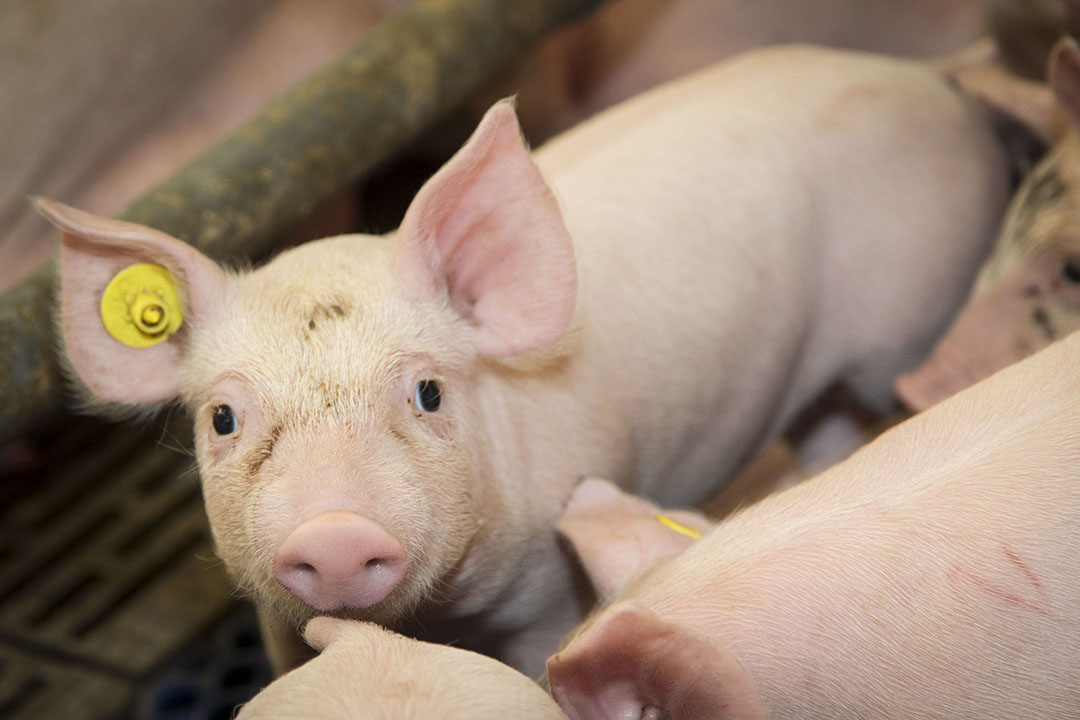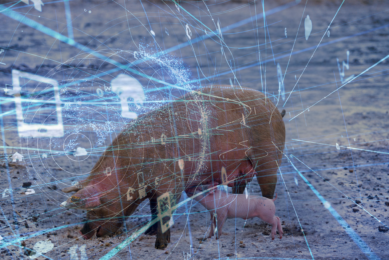Testing different mineral sources for grower pigs

The source of trace mineral supplementation matters when feeding grower/finishing pigs.
This is according to 6 research trials conducted with grower/finishing pigs in Belgium, Germany and Spain. Trouw Nutrition Researchers collaborated with several European universities and found pigs fed IntelliBond copper (IBC) and IntelliBond zinc (IBZ) throughout the entire grower/finisher phase showed significantly improved percentages of lean meat compared to pigs receiving feed supplemented with copper sulphate and zinc sulphate throughout the entire grower/finisher phase. The trial results also showed that feeding IntelliBond (IB) improved the feed conversion ratio (FCR) -3.8%, and improved feed efficiency (FE) 3.9% in the final phase before slaughter compared to pigs receiving copper sulphate and zinc sulphate. Finally, pigs fed IB also showed a trend toward improved average daily gain (ADG) of 3.9% in the final phase before slaughter compared to pigs receiving sulphate trace minerals.
Comparison study with sulphate minerals
In developing the studies, researchers sought to evaluate whether IB minerals would deliver added benefits compared to sulphate minerals under varying EU production conditions. A meta-analysis compared the efficacy of the following dietary treatment protocols: A control group of grower/finishing pigs received feed supplemented with 15 ppm copper from Cu sulphate and 80 ppm zinc from Zn sulphate; performance was compared to grower/finishing pigs receiving 15 ppm Cu from IBC and 80 ppm Zn from IBZ. A control group of grower/finishing pigs received feed supplemented with 15 ppm copper sulphate and 20 ppm zinc sulphate; performance was compared to grower/finishing pigs receiving feed supplemented with 15 ppm Cu from IBC and 20 ppm Zn from IBZ. Among pigs receiving 80 ppm added zinc, the pigs receiving IBZ showed a 1% increase in lean meat (change of 0.6%) compared to pigs receiving zinc sulphate. Feed efficiency was improved 1.3% for the overall study period for pigs receiving IBZ compared to the pigs receiving zinc sulphate. Finally, ADG tended to be improved for pigs receiving IntelliBond, with a 3.9% increase observed during the third phase of feeding. The amount of zinc fed affected results, as the outcomes described above were found among pigs fed 80 ppm added zinc. No significant differences were seen among pigs fed 20 ppm zinc.
Fine tune and optimise
Addressing the improvements delivered by IB trace mineral sources, researchers are focusing also on the mode of action of IB. Unlike sulphate trace minerals, the unique crystalline structure of IB limits interaction with antagonists in the upper gastrointestinal area, safeguarding the minerals for use by the animal where it is needed. Additionally, IntelliBond is engineered to avoid undesired interactions with other essential feed ingredients and promoting availability of the minerals. “The EU has long been at the forefront of efficient livestock production and these improvements demonstrate how small fixes including the right choice and amount of trace minerals can help to fine tune and optimise feed quality can deliver a difference in key animal performance and productivity metrics,” said Dr Sandra van Kuijk, Trouw Nutrition R&D researcher. Remarking on the economic considerations that factor into dietary changes, van Kuijk stated, “When the cost/benefit analysis of supplementing feed with a higher quality trace mineral is considered, it’s a pretty easy decision to make the change away from sulphate trace minerals towards IB minerals.”












